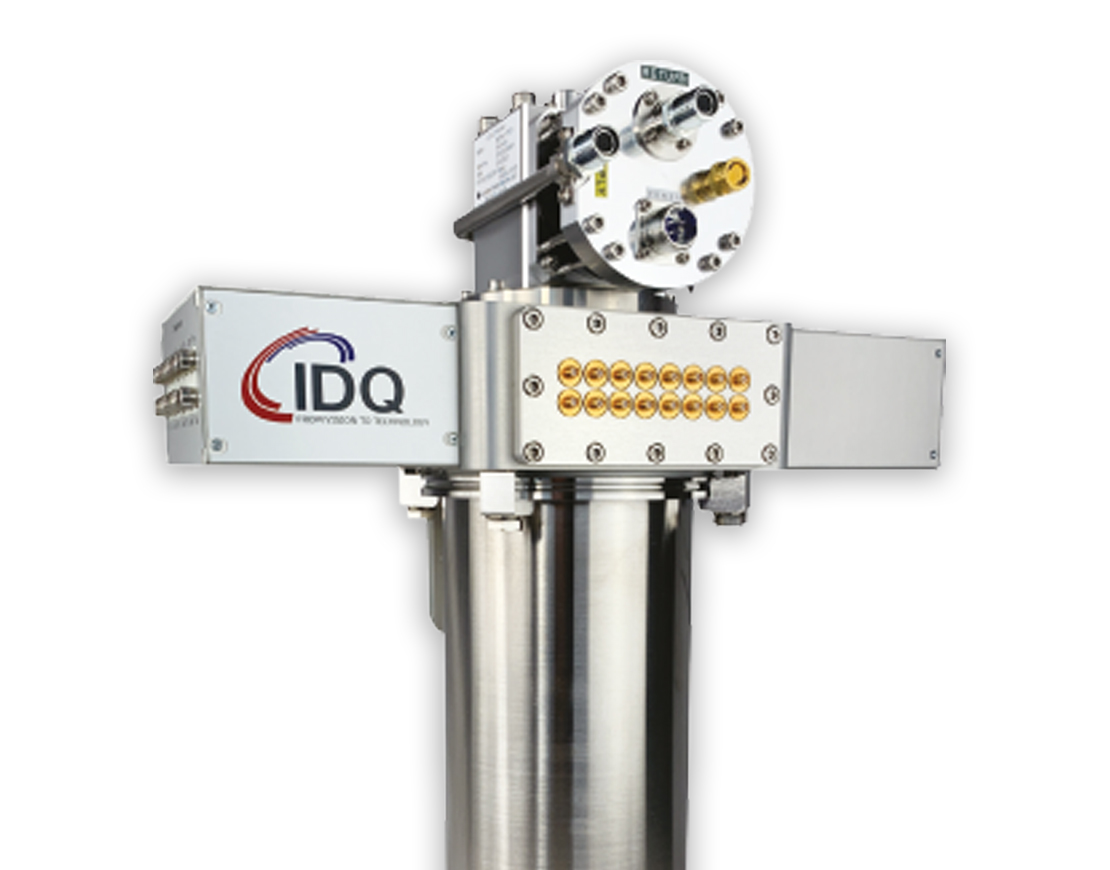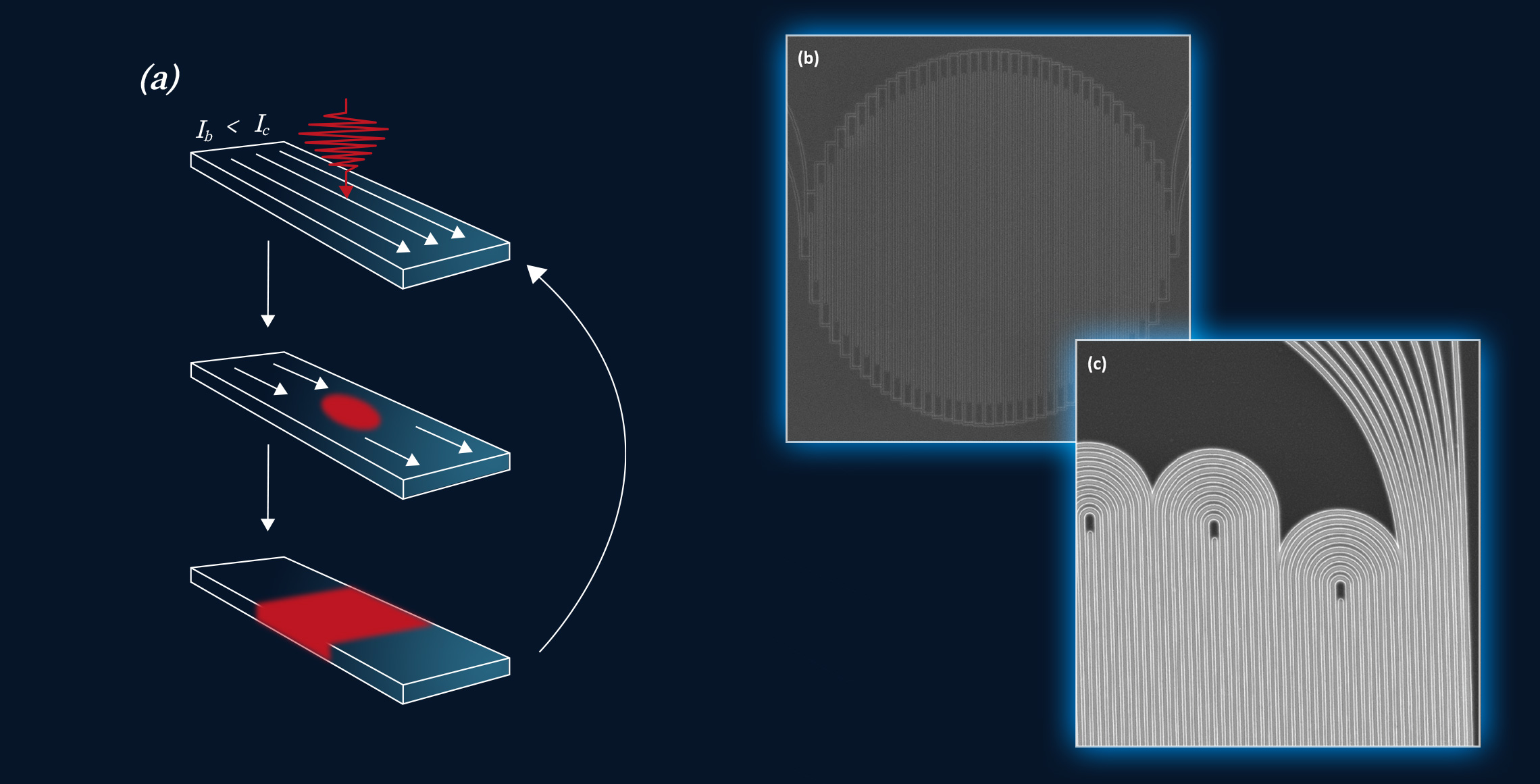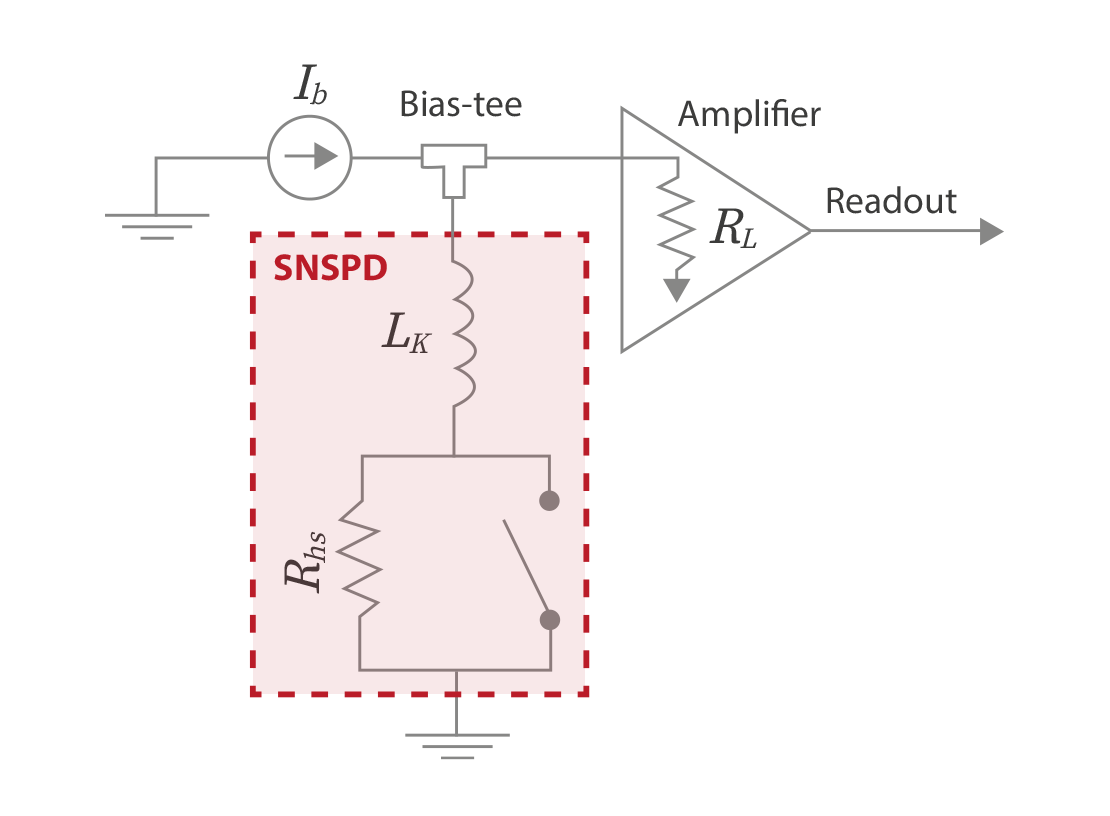Superconducting nanowire single-photon detectors (SNSPDs) represent the very best in single-photon detection. They offer many important advantages over the best competing semiconductor technologies: unparalleled detection efficiency and timing precision, negligible intrinsic dark counts, ultrafast detection rates, and broadband operation, all with comparatively simple cryogenics and device physics. They are quickly becoming the detector of choice for a broad range of applications from quantum optics to photonic quantum computing.

SNSPDs operate by holding a nanometer-scale strip of superconducting material below its critical temperature, patterned in a compact meander geometry to create a circular pixel with high detection efficiency over a two-dimensional detector plane. The absorption of a single photon by an SNSPD causes a rapid observable spike in the nanowire’s resistance, and cryogenic read-out circuitry sends the user a picosecond-precise electrical pulse, simple to record using off-the-shelf time-correlator devices.
With the right optical cavity design, just about every photon will be absorbed by the nanowire across a broad spectral range centered at the wavelengths of your choice. Combined with the low ambient light from operating at cryogenic temperatures, the overall result is an incredibly high-performance single-photon detector, with unrivalled detection efficiency, recovery speed, timing precision, and negligible noise.

Figure 1 – Superconducting nanowire design and photon absorption.
(a) Current-carrying nanowire (or nanostrip) switching from a superconducting to a resistive state following the absorption of a photon.
(b) SEM image of a typical meandered nanowire.
(c) SEM image of an eight-pixel interleaved SNSPD design for photon-number resolution (PNR) and ultrafast detection.
In operating an SNSPD, the nanowire is cooled below its critical temperature and biased with a direct current that is close to, but less than, the critical current of the nanowire. A photon incident on the nanowire will break the superconductivity via the formation of a localized non-superconducting region, or hotspot, with finite electrical resistance.
This change in the nanowire’s resistance is measured with an electrical readout circuit (see Figure 2). This resistance spike (~1 kΩ) is much larger than the input impedance of the readout amplifier (50 Ω), and so most of the bias current is shunted to the amplifier. This produces a measurable voltage pulse that is approximately equal to the bias current multiplied by the resistance. With most of the bias current flowing through the amplifier, the non-superconducting region rapidly cools and returns to the superconducting state, ready to detect another photon.
Importantly, note that the signal generated by an SNSPD is an analogue electrical pulse, and further time correlating instrumentation is required to turn these pulses into digital information. For more information on IDQ’s range of all-in-one time-tagging, coincidence correlation and delay/pulse generation instrumentation, see our ID1000 Time Controller Series product page.
The readout circuit is schematically shown below (see Figure 2). The SNSPD is biased with current Ib provided by a current generator through a bias tee. The detector can be modelled to first order by an inductance Lk representing the kinetic inductance of the nanowire, serially connected to a variable resistor whose value is 0 while the nanowire is superconductive and Rhs ≈ 1 kΩ after the absorption of a photon.
The current is shunted to the readout circuit, and the nanowire quickly cools and returns to thermal equilibrium. This allows the current to return to the nanowire with a time constant ≈ Lk/RL, where RL ≈ 50 Ω is the typical load resistance.
In practice, the recovery of the efficiency of an SNSPD after a detection is linked to the variation of the current and to the relation between the detection efficiency and the bias current. This process is described in detail in the publication “Direct measurement of the recovery time of superconducting nanowire single-photon detectors”, C. Autebert et al., Journal of Applied Physics 128, 074504 (2020).

Figure 2 – SNSPD electrical readout
Our mission at IDQ is to empower your photonic research and applications. That’s why we are thrilled to offer a family of state-of-the-art SNSPD systems – the ID281 SNSPD System and the ID281 Pro SNSPD system. Our SNSPD products have evolved from experimental systems almost 10 years ago, to completely industrialized products today that are shipping globally with very short lead times.
We are constantly developing this technology to bring better performance. Our ability to manufacture and test a large number of detectors feeds back into our R&D efforts, allowing short development cycles and rapid innovation. User feedback helps direct these efforts into improvements that will make a real impact on your applications and experiments.
Recent developments as of the publication of this page (July 2023) include detectors with substantially improved timing jitter and detection efficiency, high system detection efficiencies from < 600 nm to > 2 μm, and new detector designs for improved photon-number resolution (PNR) and ultrafast detection. Our specs are constantly improving, so please contact us for information on the latest developments.
If you’re interested in learning more or want to discuss how SNSPDs might benefit your research, please contact us!
We’d love to hear from you.